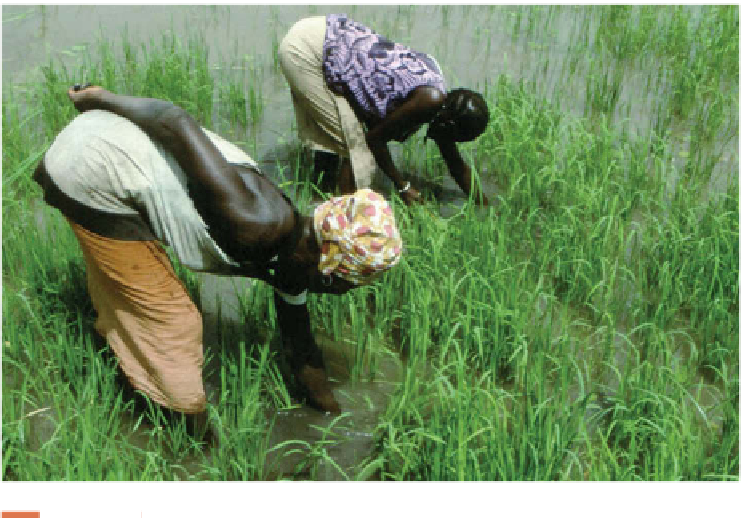Geography Reference
In-Depth Information
Guest
Field Note
Gambia
I am interested in women and rural develop-
ment in Subsaharan Africa. In 1983, I went to
Gambia to study an irrigated rice project
that was being implemented to improve the
availability of rice, the dietary staple. What
grabbed my attention? The donors' assur-
ance that the project would benefi t women,
the country's traditional rice growers. Imag-
ine my surprise a few months after project
implementation when I encountered hun-
dreds of angry women refusing to work
because they received nothing for their
labor from the fi rst harvest.
In registering women's traditional rice
plots as “family” land, project offi cials effec-
tively sabotaged the equity objectives of the
donors. Control now was concentrated under
male heads of household who reaped the
income produced by female labor. Contemporary economic strategies for Africa depend increasingly upon labor intensifi -
cation. But whose labor? Human geography provides a way of seeing the signifi cance of gender in the power relations that
mediate culture, environment, and economic development.
Figure 11.8
Gambia.
Credit: Judith Carney, University of California, Los Angeles
where the Green Revolution has had the greatest impact,
the production of cereal crops (grains such as rice and
wheat) has increased for both foreign and domestic mar-
kets. Agricultural production in this region remains rela-
tively small in scale and quite dependent on manual labor.
In Subsaharan Africa, total commercialized agriculture
has increased, but overall agricultural exports have
decreased. As in Asia, farm units in Subsaharan Africa
have remained relatively small and dependent on intensi-
fi ed manual labor.
What this regional-scale analysis does not tell us is
how these changes have affected local rural communities.
These changes can be environmental, economic, and
social. A recent study in the small country of Gambia
(West Africa) by Judith Carney has shown how changing
agricultural practices have altered not only the rural envi-
ronment and economy, but also relations between men
and women (Fig. 11.8). Over the last 30 years, interna-
tional developmental assistance to Gambia has led to
ambitious projects designed to convert wetlands to irri-
gated agricultural lands, making possible production of
rice year-round. By the late 1980s, virtually all of the
country's suitable wetlands had been converted to year-
round rice production. This transformation created ten-
sions within rural households by converting lands women
traditionally used for family subsistence into commercial-
ized farming plots. In addition, when rice production was
turned into a year-round occupation, women found them-
selves with less time for other activities crucial for house-
hold maintenance.
This situation underscores the fact that in Africa, as
in much of the rest of the less industrialized world, agri-
cultural work is overwhelmingly carried out by women. In
Subsaharan Africa and South Asia, 60 percent of all
employed females work in the agriculture sector. A geo-
graphical perspective helps to shed light on how changes
in agricultural practices throughout the world not only
alter rural landscapes but also affect family and commu-
nity relationships.
The Impacts of Agricultural Modernization
on Earlier Practices
In the modern world, hunter-gatherers live in the context
of a globalized economy and experience pressures to
379










































